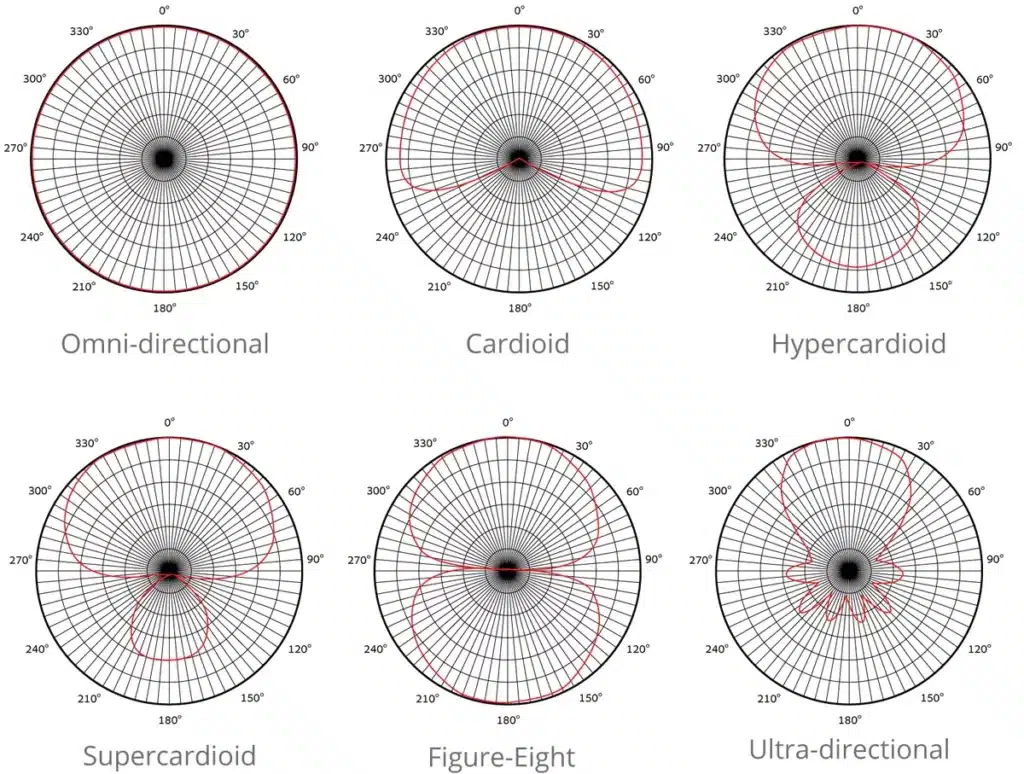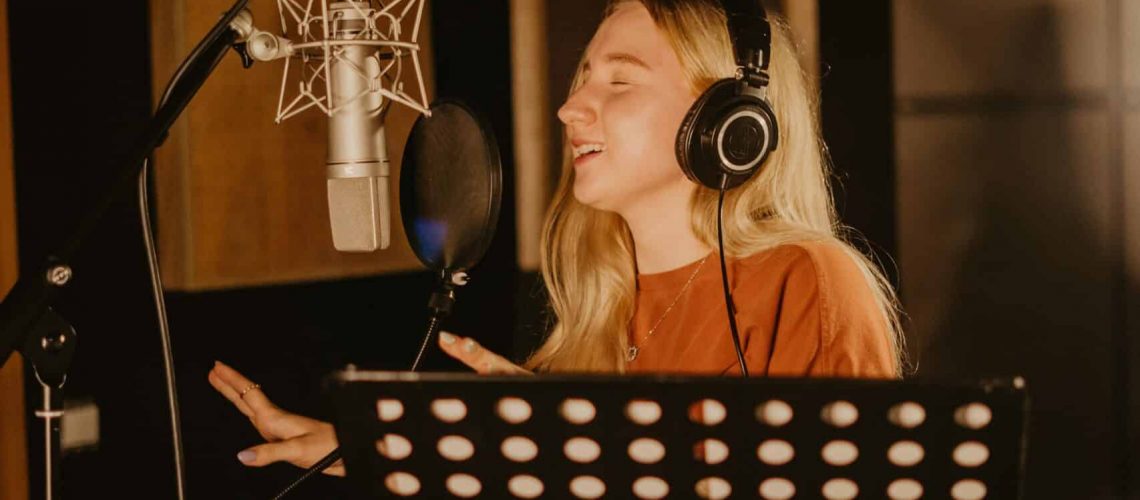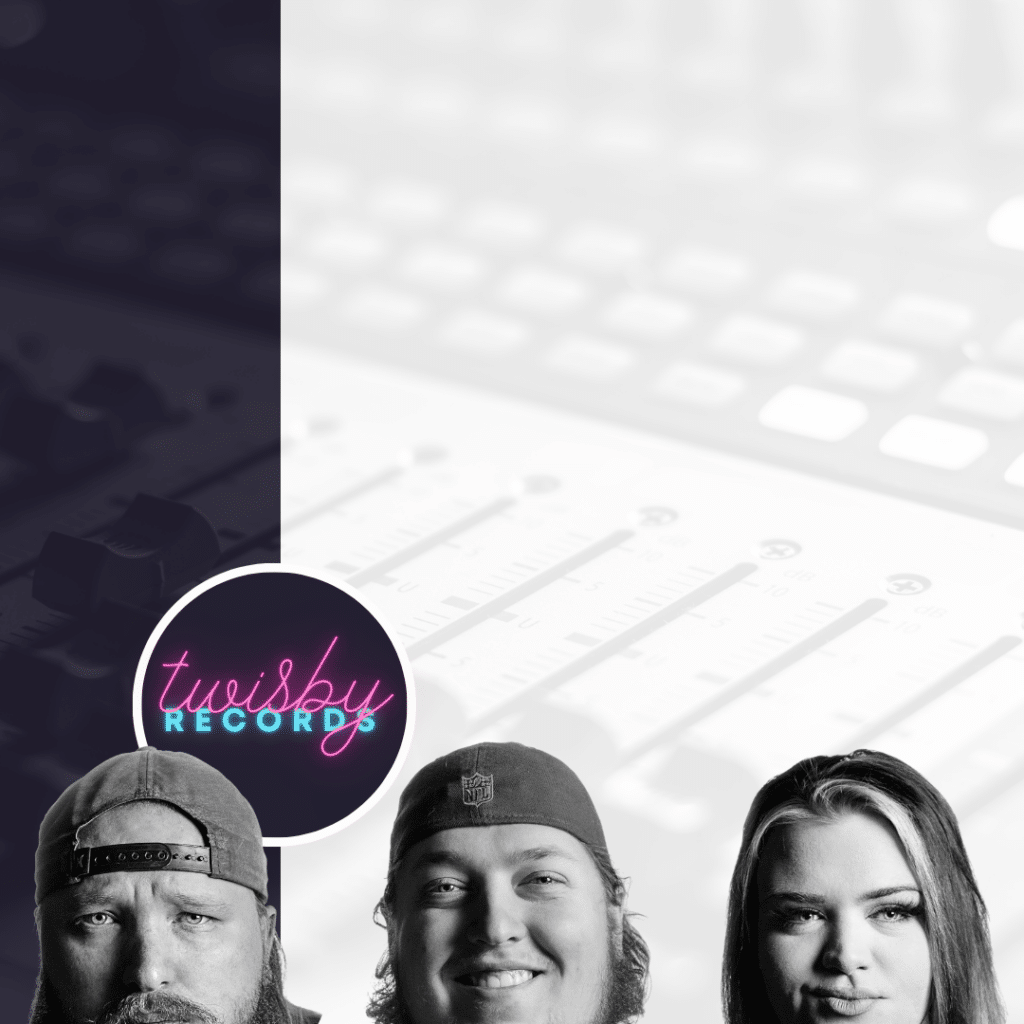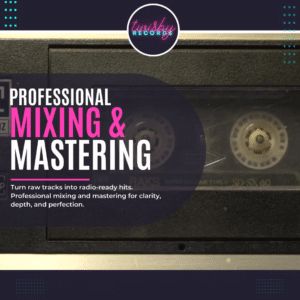Hello again my friends!
I’ve worked with countless vocalists to capture their best performances. Today, I want to share my experience and passion with you by presenting an in-depth guide on how to properly record vocals. I hope this guide will prove valuable for both aspiring producers and singers. So, let’s dive in and explore the process of recording vocals like a pro!
1. The Importance Of a Comfortable Environment
Before you even set up a microphone, creating a comfortable environment for the vocalist is crucial. A relaxed atmosphere can help calm any nerves and allow the singer to focus on their performance. This might involve adjusting the temperature, providing water or tea, and making sure there’s a comfortable place for the vocalist to sit when they’re not singing. Additionally, ensure that the space is free from distractions and excessive noise, as these can negatively impact the recording process.
Recording vocals can be very intimidating, it’s important when recording vocals to make sure the artist is comfortable with you as the engineer as well. Get to know each other prior to recording. You want the artist to be able to mess up, to experiment, not everything is going to sound great, notes are going to be missed and nothing can derail a session faster than an artist’s confidence level tanking. Remain positive, focus them emotionally and guide them into better takes. For this same reason, we don’t recommend allowing them to bring multiple people into studio or space. This isn’t a show, if the artist feels like they have to perform and impress it’ll hinder the process, communicate this with them. While some people thrive on attention and they may be able to handle this, if they do bring people and you notice that they are negatively impacting the session, don’t be afraid to ask them to leave.
Make sure the artist is comfortable during the session. Some artists prefer to record in their pajamas, or they like to get dressed up to increase their confidence level, some artists have even been known to record in their birthday suits. Tell the artist to wear whatever they want, and while filming content around recording for socials is great, don’t let the artist let filming dictate their comfort level. Tell them if they don’t want to do their hair or makeup, or get dressed up there’s always different angles that you can take for content. Their focus is the performance, just guide them, or yourself in that direction.
2. Vocal Warm-Up And Preparation
A proper vocal warm-up is essential for any singer. Before starting the recording session, encourage the vocalist to spend at least 15-20 minutes warming up their voice. This can involve humming, lip trills, and various vocal exercises to help loosen up the vocal cords and prepare for the demands of singing. This step will not only help prevent strain or injury but will also contribute to a better overall performance.
This is a great vocal warm up routine if you need guidance on how to limber up and prepare for recording takes and is the one that we at Twisby use during our own vocal sessions:
3. Microphone Selection And Placement
Choosing the right microphone for recording vocals is critical. There are numerous microphone types available, but generally, large-diaphragm condenser microphones are the go-to choice for recording vocals. These mics are known for their sensitivity, clarity, and ability to capture the nuances of a vocal performance. Some popular high-end options include the Neumann U87, AKG C414, and Audio-Technica AT4050. Budget options that give massive bang for the buck include: Lewitt LTC Pure 440, sE Electronics sE2200, and the Blue Baby Bottle just to name a few.
All microphones have different characteristics that make them unique, and will affect the unique characteristics of a vocalist differently. The best way to choose the right microphone would be to go to a store that will allow you to demo a variety of microphones, and then choose the microphone that best fits the vocal you want to record.
When it comes to placing the microphone, there are a few key factors to consider. Position the microphone so that it’s pointing towards the singer’s mouth, about 6-12 inches away, depending on the mic and the desired sound. To minimize plosives (the harsh “P” and “B” sounds), use a pop filter placed between the singer and the microphone.
It is important to be mindful of the “proximity effect” of microphones when recording vocals. The proximity effect is a phenomenon that occurs with directional microphones, particularly those with cardioid, supercardioid, or hypercardioid polar patterns. As the name suggests, the proximity effect refers to the change in the microphone’s frequency response as the sound source gets closer to the microphone. In essence, as the vocalist moves nearer to the mic, the low-frequency response increases, resulting in a more pronounced and warmer bass sound.

When recording vocals, the proximity effect can be both an advantage and a challenge, depending on the desired outcome. For some vocalists or genres, the enhanced bass response can add warmth, depth, and richness to the voice, making it more appealing and powerful. In these cases, the proximity effect can be used creatively to shape the tonal quality of the vocal recording.
However, in some situations, the proximity effect might cause problems by making the vocals sound too bass-heavy or overpowering other elements in the mix. In such cases, it’s essential to be aware of the effect and manage it accordingly. As a good rule of thumb, you should start the vocalist out 4 to 6 inches away from your microphone and move forward or backwards from there to see where the sweet spot is.
You need to also pay attention to mouth noises as well, while with some mics is not a major factor, we’ve gotten some wild recordings where the artist just sounded like they were chewing with their mouth open, this can absolutely ruin a vocal take. Listen intently to make sure these are at a minimum, while some plugins can help reduce mouth noises, they have there limits, and there is a point where you are sacrificing the quality of the audio to remove them.
Experimenting with different microphone techniques can provide massive results when it comes to recording your vocals, I’ll touch on this a little later in this post, so read on!
4. Setting The Proper Input Level
Before you start recording, it’s essential to set the proper input level on your audio interface or preamp. This is the most critical part of the technical side of vocal recording, if you take NOTHING ELSE away from this post, DO NOT GLOSS OVER THIS STEP! Have the singer perform at their loudest to gauge the appropriate level, making sure the signal doesn’t clip or distort. Aim for a peak level of around -10dB to -6dB to leave enough headroom for mixing later.
There is a perfect balance that can be struck between recording a take that is too quiet, vs recording a take that is unusable because it was clipping on the way in to your DAW (Digital Audio Workstation). Most modern interfaces today have noise floors that are almost non existent. So, if a take was recorded that seems to quiet that is OK! You can apply digital gain to make it louder to be usuable in the next phase. You CANNOT however, remove clipping from a clipped recording. That take will be unusable and you will have to record again. Tools such as Izotope’s RX De-Clip can sometimes help save a take, but more often than not you will have to re-record.
Save time, and the hassle of having you or your singer re-record a perfectly good take by making sure that your input levels are properly set from the get go. No feeling is worse than sending off your tracks for mixing and mastering and getting an email saying “Hey, your vocals are clipping” and suggesting you re-record them or that your song won’t have the desired results. Engineers can often times do some magical things, but our toolkits often times just don’t have a way to fix this for you.
5. Using The Right Headphones And Monitoring Setup
A good pair of closed-back headphones is crucial for recording vocals. These headphones help isolate the singer from any background noise, allowing them to focus on their performance, and also reduce the amount of track bleed into the microphone. Make sure the headphones are comfortable and provide a clear, balanced sound.
When setting up the headphone mix for the singer, make sure they can hear themselves clearly, as well as any other essential elements of the track (e.g., a click track or key instrumental parts). Some singers prefer to have one ear off the headphones to better hear their natural voice. Experiment with the headphone mix to find what works best for the vocalist.
6. Creating The Perfect Vocal Chain
A vocal chain is the series of processors and effects that shape the sound of the recorded vocals. While it’s essential to capture a great performance during the recording process, the vocal chain can help enhance and polish the sound.
Start with a high-quality preamp to amplify the microphone signal. A good preamp will add warmth and character to the vocals, making them sound more professional. Next, consider adding a compressor to help control the dynamic range of the performance. A gentle compression ratio (around 2:1 or 3:1) with a fast attack and a moderate release time can help even out the volume levels while preserving the natural dynamics of the voice. Be careful not to over-compress, as this can lead to an unnatural, squashed sound.
Some artists like to use Auto-Tune during the recording phase, which i know some of you dislike the idea of Auto-Tune, and the idea of tuning a vocal take, and I get it, but every performance can benefit from tuning, even if it’s just minor adjustments. Recording with auto-tune on track, allows you to focus more on the emotion, the delivery and the timing. While you should absolutely be focusing on the performance, if you use autotune and a take sounds great, it’ll sound great when you go to actually tune your vocals in the editing/production phases. Some artists, like Chris Brown, will even print autotune straight into the track when recording. While we don’t recommend you do this just because it can cause delay compensation issues (aka “Latency”), you CAN if you really feel the need to. To do this you record your vocals and then send them to a new track with Auto-Tune on it to print, essentially recording 2 vocal tracks at once.
After compression, consider using EQ to shape the tone of the vocals. A high-pass filter can help remove any low-end rumble, while a subtle boost in the high-mid frequencies can add presence and clarity. Be cautious with EQ, though; it’s better to make small, incremental adjustments rather than drastic changes. You can always refine the EQ settings during the mixing stage.
Some artists like Reverb and Delay, and from my experience, they use a RIDICULOUS amount of it, so be prepared to send them reverb and delay to their headphone mix, but keep it out of your own mix as the engineer or use a less amount so you can listen more critically.
Be conservative with these effects during recording, as it’s easy to overdo it. You can always add more during the mixing process.
7. Record Multiple Takes And Comping
It’s rare for a vocalist to nail the perfect performance in just one take. Instead, record multiple takes to capture different interpretations, emotions, and nuances. This will give you more options when it comes time to choose the best performance.
Once you have several takes, you can comp (compile) the best parts from each one to create a final, polished vocal track. This process allows you to capitalize on the strongest moments from each take, resulting in a more compelling and engaging performance.
8. Experiment With Vocal Doubling And Harmonies
Vocal doubling is a technique where the singer records the same part twice, and the two takes are layered on top of each other in the mix. This can add depth and richness to the vocals, making them sound fuller and more polished.
In addition to vocal doubling, consider experimenting with harmonies. These can be either sung by the lead vocalist or by additional singers. Harmonies can add interest and texture to a song, helping to elevate the vocal arrangement.
9. Capturing Ad-Libs And Vocal Effects
In addition to the main vocal performance, capturing ad-libs and other vocal effects can add excitement and variety to a track. These can include vocal runs, improvisations, or even spoken word elements.
- Encourage the vocalist to experiment and let their creativity flow. Give them the freedom to try different ideas and see what works best for the song.
- Record several takes of ad-libs and vocal effects to give you more options during the mixing process.
- Be mindful of the overall arrangement and ensure that any additional vocal elements complement the main performance rather than detracting from it.
By incorporating ad-libs and vocal effects, you can add an extra layer of interest and depth to your vocal recordings. For a very deep dive into vocal layering, go check out this post from my partner Kreg: How to Layer Vocals Like a Pro: 7 Layers You NEED to Record
10. Editing And Fine-Tuning
Once you have captured the best vocal performance possible, it’s time to edit and fine-tune the recording. This might involve tasks such as:
- Removing any unwanted noises, breaths, or clicks
- Adjusting the timing and alignment of the vocals to ensure they sit perfectly within the rhythm and groove of the music
- Tuning any slightly off-pitch notes using pitch correction software like Melodyne or Auto-Tune
Remember, the goal is to enhance the natural performance, not to create an overly processed or robotic sound. Use editing tools sparingly and with care.
11. Communication And Collaboration
Throughout the entire vocal recording process, clear communication and collaboration between the producer and the vocalist are essential. Make sure to provide constructive feedback and guidance, and encourage the singer to experiment with different approaches to timing, phrasing, and dynamics. By fostering a collaborative atmosphere, you’re more likely to achieve a final product that meets both your expectations and the vocalist’s artistic vision.
12. Acoustic Treatment and Isolation
One often overlooked aspect of recording vocals is the importance of proper acoustic treatment and isolation in the recording space. A room with poor acoustics can negatively impact the quality of your vocal recordings, leading to issues such as excessive reverb, standing waves, or flutter echoes. To combat these problems, consider the following:
- Use absorption panels, bass traps, and diffusers to treat your recording space. These materials can help control reflections and improve the overall acoustics of the room.
- Create a vocal booth or isolation shield to further minimize reflections and isolate the vocalist from external noise. There are many commercially available options, or you can build a custom solution tailored to your needs.
By investing time and effort into optimizing the acoustics of your recording environment, you can significantly improve the quality of your vocal recordings and create a more professional sound.
13. Experimenting With Microphone Techniques
While I mentioned earlier the importance of selecting the right microphone and proper placement, there’s a lot more to consider when it comes to microphone techniques. Here are some additional tips to keep in mind:
- Try different microphone polar patterns (cardioid, omnidirectional, etc.) to see which one best suits the vocalist’s voice and the desired sound.
- Experiment with various mic placements, such as angling the microphone slightly off-axis or varying the distance between the singer and the microphone. Different placements can yield unique tonal qualities and help you find the perfect sound for the track.
- When recording a louder section of a performance, having the vocalist move off-axis of the microphone can be an effective technique to manage the intensity of the sound and minimize potential distortion. As the vocalist projects more volume and energy, the microphone might struggle to handle the increased sound pressure levels, leading to distortion or an overly aggressive sound. Alot of artists have a tendency from live performances to move backwards and away from the mic when singing a louder part. Coach them to instead turn their head off instead of moving backwards and aiming their voice to either side of the microphone. Moving backwards can create a volume decrease, but moving off axis allows for a more uniform and balanced take.
Moving off-axis can also help balance the frequency response of the vocals, particularly when dealing with microphones that exhibit the proximity effect. If the vocalist gets closer, the proximity effect can cause an excessive buildup of low frequencies, making the vocals sound muddy or boomy. By having the vocalist move off-axis, the microphone captures a more even frequency response, resulting in a more balanced and natural vocal sound. This technique allows the producer or engineer to maintain better control over the dynamics and tonal quality of the recording, even during the most powerful and expressive sections of the performance.
By taking the time to explore different microphone techniques, you can unlock new creative possibilities and find the ideal sound for your vocal recordings.
14. The Emotional Connection
One of the most important aspects of a great vocal performance is the emotional connection the singer has with the song. As a producer or engineer, it’s essential to be mindful of this and find ways to help the vocalist tap into the emotions behind the lyrics.
- Encourage the vocalist to take a moment before recording to connect with the song’s message and consider what it means to them personally.
- Talk through the lyrics together and discuss the story or emotion they’re trying to convey.
- Be empathetic and supportive if the singer becomes emotional during the recording process. Allow them the space they need to regroup and refocus before continuing.
By prioritizing the emotional connection, you can help the vocalist deliver a more authentic, moving performance that resonates with listeners.
15. Vocal Health And Maintenance
Last, but far from the least on my list is that it’s essential to consider the vocalist’s health and well-being during the recording process. Singing can be physically demanding, and maintaining good vocal health is crucial for achieving the best possible performance.
- Encourage the vocalist to stay hydrated by drinking water or herbal tea throughout the session. This can help keep their vocal cords lubricated and prevent strain.
- Schedule regular breaks to give the singer time to rest and recuperate. Overworking the voice can lead to fatigue and diminished performance quality.
- Advise the vocalist to avoid consuming dairy products, caffeine, or excessive amounts of sugar before and during the session, as these can negatively impact their voice.
- If the singer experiences any vocal strain, discomfort, or hoarseness, it’s crucial to stop and allow them time to recover. Pushing through vocal issues can result in long-term damage and hinder their ability to perform at their best.
By prioritizing vocal health and being mindful of the singer’s well-being, you can create a more enjoyable recording experience and help ensure the vocalist delivers their best performance.
You can nail every take and still miss the mark if your vocals aren’t mixed to perfection. A great recording is the foundation, but it’s the mix that brings it to life. Don’t let all your hard work in the studio go to waste with amateur production. Here’s how we can make that happen.
















